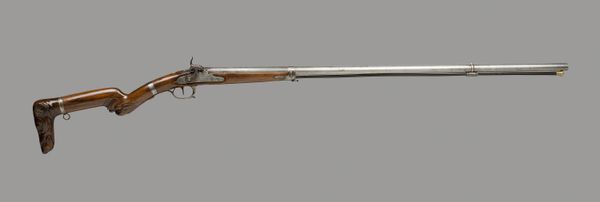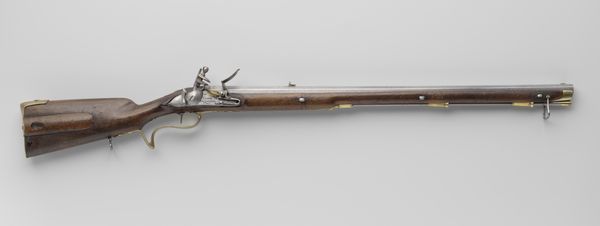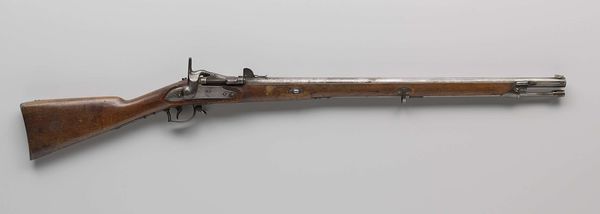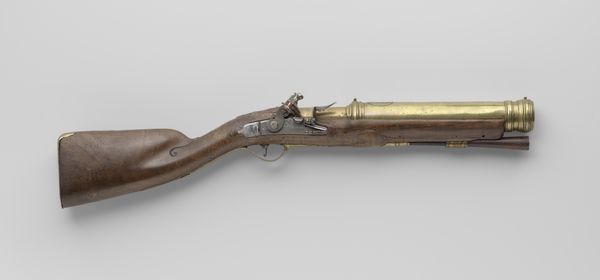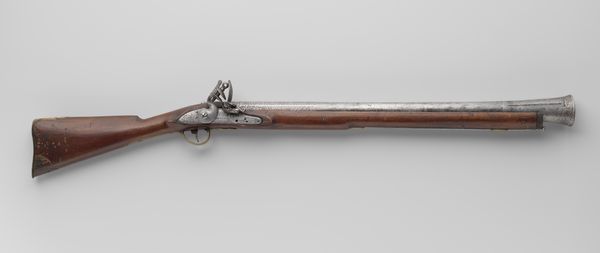
Vuursteengeweer, Frans musket Modèle 1777 1807 - 1809
0:00
0:00
metal, sculpture, wood
#
neoclacissism
#
metal
#
sculpture
#
wood
#
history-painting
Dimensions: length 152.6 cm, height 19.5 cm, depth 7.5 cm, weight 4.4 kg, length 113.8 cm, diameter 17.6 mm
Copyright: Rijks Museum: Open Domain
Editor: We're looking at a French Model 1777 flintlock musket, crafted between 1807 and 1809 by the Koninklijke Geweerfabriek Culemborg. It's quite austere, made of wood and metal. I notice how the smooth, almost elegant lines belie its intended purpose. What stands out to you about this object? Curator: What a compelling question! Immediately, I'm drawn to the symbolic weight it carries. The musket isn't just a weapon; it’s a representation of power, authority, and the shifting tides of European history. Think about what this instrument represented during the Napoleonic era: conquest, revolution, and the very real possibility of death. Editor: It's strange to think of something so brutal being described as neoclassical. Curator: Neoclassicism wasn't just about beauty; it was about order, control, and a return to the perceived "glory" of past empires. Consider how the gun's design mirrors the architectural styles of the time—precise, balanced, and undeniably imposing. What emotional impact do you think such an object had on both the soldier wielding it and the people facing it on the battlefield? Editor: I can only imagine the fear, the anticipation of conflict. This musket becomes a vessel for so much psychological weight. It really goes beyond just being a historical artifact. Curator: Exactly! And that is the power of visual symbols to represent an entire epoch and the collective human experience within it. Do you feel this changed your perception? Editor: Absolutely, viewing it through that lens really highlighted how objects carry memory, not just in their form, but in the emotions they evoke.
Comments
No comments
Be the first to comment and join the conversation on the ultimate creative platform.

